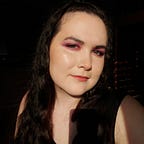Recovering from Concussion
For some, it’s a short road, for others, it’s a long and difficult one.
In 2012, John Leddy and his colleagues at the Department of Orthopaedics and the Sport Medicine Institute in Buffalo looked at 564 studies about concussion. They wanted to find a treatment for concussions and their partner, post concussion syndrome.
Post concussion syndrome is when the symptoms of a concussion remain beyond the 7–10 days it takes to recover from a concussion. These prolonged symptoms include: memory or concentration problems, fatigue, sleep disturbance, headaches, dizziness or a personality shift.
Leddy states that these symptoms are objective. By only diagnosing through symptoms, the subjective of a patient’s history or their individual symptoms get ignored. People overlook post concussion syndrome because of the wide range of symptoms. These wide range of symptoms disappear between 1 and 3 months. Some precursors of post concussion syndrome are: female sex, a young age, and a history of mental disorders like anxiety or depression.
Reasons for lasting symptoms
The mechanical explanation, concerning movement, shows that the sharp stop compacts the brain. The impact causes neurons and blood to break. After the impact, there is a period of communication failure in the brain.
The neurometabolic explanation, concerning the changes of chemicals in your brain, shows that a concussion causes a series of chemical changes in your brain. In your brain, this series of chemicals affect glucose (sugar) levels, blood flow, and change the way a cell “breathes” or produces waste.
The physiological explanation, concerning both the transmission and the chemical changes, talks about how the chemicals affect blood circulation in the brain. The explanation states that a concussion affects more than just the brain. It effects the other organs in your body like your kidneys. Studies conclude that patients with concussions have higher resting heart rates and after exercise or after intense periods of concentration.
Another physiological response after a concussion is the brain becomes sensitive to carbon dioxide — the stuff we breathe out. The stuff cells breathe out.
Range of Assessment and Diagnosis
Leddy states that patients should have a detailed record of a concussion. The cause, the force, the symptoms and their severity and a history of previous concussions. He, like other studies, concludes that patients with a history of concussion are more likely to get another concussion. Leddy notes that depression is a symptom that indicates post concussion syndrome.
Leddy says that when assessing for a concussion, the assessment should include a concentration exercise, memory exercise and a look at the nerves in the brain. He states that the assessment should also include the Romburg test(to test a person’s balance), a tandem gait (walking in a straight line), and vestibular testing(checking a person’s inner ear balance).
Another test that should be performed is a Balke test to determine the effect of exercise on a concussed brain and whether or not a patient is fit to return to sports. The Balke test involved an athlete running as many laps as they can in 15 minutes.
Recovery
Most doctors prescribe both brain and body rest when a person is concussed. In some cases a doctor might prescribe antidepressants for a person suffering from post concussion syndrome.
In the end, rest is the key to recovering from concussion.
Source
Leddy, J.J., Harkeet, S., Vikram, S., Baker, J.G., Willer, B. (2012). Rehabilitation of concussion and post-concussion syndrome. Sports Health, 4(2). 147–154. doi:10.1177/1941738111433673
